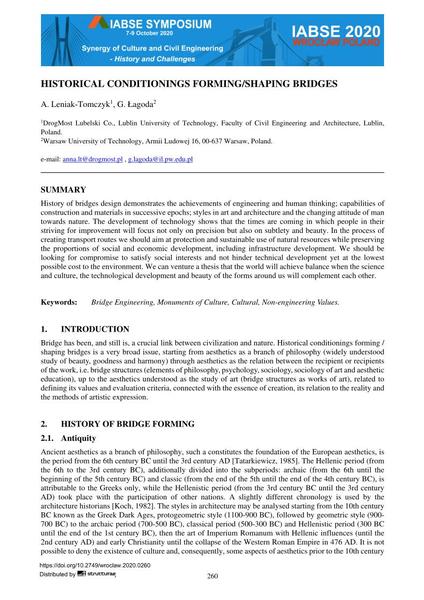Historical Conditionings Forming/Shaping Bridges

|
|
|||||||||||
Détails bibliographiques
| Auteur(s): |
A. Leniak-Tomczyk
G. Łagoda |
||||
|---|---|---|---|---|---|
| Médium: | papier de conférence | ||||
| Langue(s): | anglais | ||||
| Conférence: | IABSE Symposium: Synergy of Culture and Civil Engineering – History and Challenges, Wrocław, Poland, 7-9 October 2020 | ||||
| Publié dans: | IABSE Symposium Wroclaw 2020 | ||||
|
|||||
| Page(s): | 260-267 | ||||
| Nombre total de pages (du PDF): | 8 | ||||
| Année: | 2020 | ||||
| DOI: | 10.2749/wroclaw.2020.0260 | ||||
| Abstrait: |
History of bridges design demonstrates the achievements of engineering and human thinking; capabilities of construction and materials in successive epochs; styles in art and architecture and the changing attitude of man towards nature. The development of technology shows that the times are coming in which people in their striving for improvement will focus not only on precision but also on subtlety and beauty. In the process of creating transport routes we should aim at protection and sustainable use of natural resources while preserving the proportions of social and economic development, including infrastructure development. We should be looking for compromise to satisfy social interests and not hinder technical development yet at the lowest possible cost to the environment. We can venture a thesis that the world will achieve balance when the science and culture, the technological development and beauty of the forms around us will complement each other. |
||||
